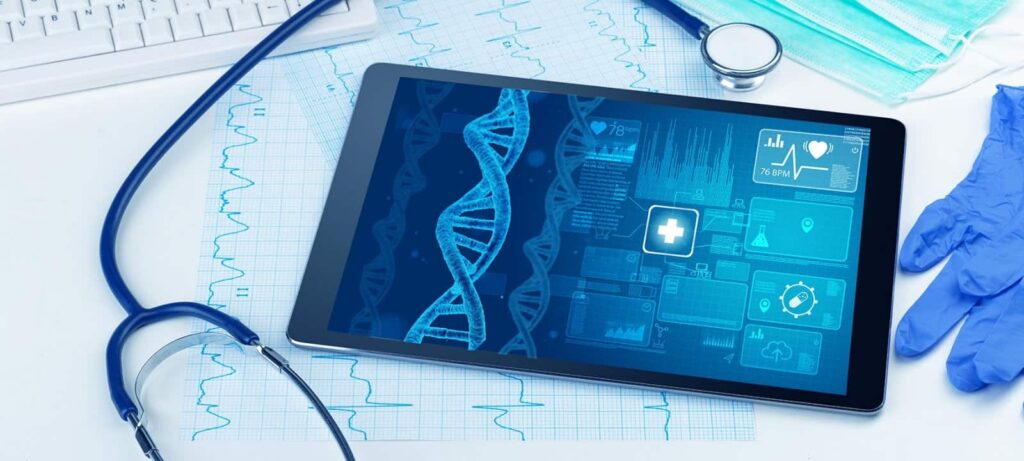Introduction to Health Informatics and Technology
Health informatics and related IT solutions find a great place in today’s healthcare industry. In this article the author presents the field of health informatics and its utilization and worth. Health informatics and technology involves merging of health care, information technology and information management in order to enhance patient’s care as well as health care provision. Its purpose is to gather, store, process and disseminate medical data in electronic format. The introduction to health informatics and technology logan knowledge in this field relies on the association between clinical data and the principles of computer science in order to facilitate a better means of decision making within health care organizations, decrease mistakes, and exert organization in the process of health care delivery amongst many medical facilities.

What is Health Informatics?
Health informatics is the study of how to use computers and information technology in healthcare. It combines ideas from information science, computer science, and introduction to health informatics and technology logan.
Some key things about health informatics include:
- Managing and sharing health information between doctors, patients, and insurance companies.
- Using electronic health records (EHRs) to store and share patient medical information.
- Using data to learn about public health problems.
- Creating tools to help doctors diagnose illnesses.
- Protecting health information and keeping it private.
- Improving access to healthcare using telemedicine and mobile apps.
In short, health informatics applies technology to healthcare to make processes better, improve care, and lower costs.
Why is Health Informatics Important?
There are several reasons why health informatics is essential introduction to health informatics and technology logan:
Better Patient Care
EHRs, diagnostic tools, and other technologies help doctors provide higher quality and safer care. Doctors can easily see a patient’s full medical history.
Better Communication
Secure messaging, telehealth, and data sharing help care teams, hospitals, and doctors work together better for patients.
More Efficient Workflows
Digital solutions make tasks like scheduling, billing and coding faster. This saves time and healthcare resources.
Helpful Research
Data from EHRs and insurance claims provides insights for medical studies, drug trials, disease tracking, and public health policies.
Increased Access to Care
Telehealth and mobile apps extend care to remote places, especially rural areas. This allows virtual doctor visits.
Drives New Ideas
Data fuels innovations in predictive analysis, artificial intelligence, and precision medicine.
So in summary, health informatics creates a more sustainable, value-based healthcare system focused on quality, safety, access and affordability.
Key Uses of Health Informatics
Here are some major uses of health informatics:
Electronic Health Records (EHR)
EHRs store patient information like name, medical history, medications, allergies and test results in one digital place.
Health Information Exchange (HIE)
HIE platforms securely share health data between different EHR systems and providers.
Telehealth and Telemedicine
Remote technologies like video calls and monitoring devices enable virtual doctor visits and remote care.
Mobile Health Apps
Apps on phones promote wellness, provide care instructions, and allow communication with providers.
Clinical Decision Support (CDS)
CDS systems use medical knowledge and patient data to offer advice to doctors.
Population Health Management
Analytics of large datasets identify at-risk groups and monitor community health outcomes.
Medical Imaging Informatics
Digital systems manage medical images like X-rays and MRIs to help with diagnosis.
Big Data and Precision Medicine
Advanced analysis of “big data” allows customizing care based on a person’s specifics.
Benefits of Key Technologies
Here’s an overview of the benefits of major health informatics technologies:
| Technology | Benefits |
| Electronic Health Records | Access records anywhere. Fewer errors. Automated referrals. Streamlined billing. Secure sharing. |
| Health Information Exchange | Better care coordination. Faster access to records in emergencies. Less duplicate tests. |
| Telehealth and Telemedicine | Increased specialty care access. Remote monitoring. Convenience of virtual visits. Lower travel costs. |
| Mobile Health Apps | Empowered self-care. Treatment reminders. 24/7 communication with providers. |
| Clinical Decision Support | Evidence-based recommendations. Reduced errors and uneven care quality. Improved guideline compliance. |
| Population Health Management | Identify high-risk patients. Customized programs. Evaluate community treatment outcomes. |
In summary, health informatics delivers tangible improvements across healthcare through enhanced access, coordination, outcomes and efficient operations.
FAQs about Health Informatics
Q. What skills are needed for a health informatics career?
A. Skills include clinical knowledge, regulations, databases, analytics, project management, and understanding clinical terms and EHRs. Backgrounds in fields like nursing, computer science or healthcare administration are preferred.
Q. What are in-demand health informatics jobs?
A. Popular roles include health information managers, clinical analysts, EHR specialists, data analysts, population health analysts, telehealth coordinators, privacy officers, project managers and clinical informatics nurse specialists. Data scientist and AI/ML engineer jobs in healthcare are also growing.
Q. How can health informatics help current healthcare challenges?
A. By using data insights, it can help lower costs through optimized care, fewer readmissions and preventable issues. It also supports new care models, improves health equity, aids research for new treatments, and helps pandemic response with digital tools and population monitoring.
Q. What are emerging trends in health informatics?
A. Growing areas include AI/machine learning, precision medicine, blockchain for data management, cloud-based technologies, consumer-focused tools, expanding telehealth, interoperability standards, natural language processing, virtual/augmented reality, and use of real-world evidence. Wearables and Internet of Medical Things are also on the rise.
Conclusion
Lastly, health informatics covers digital means and tools to handle the huge amount of health data and available resources. They have a significant function in the current improvement of clinical and service delivery, the promotion of patient satisfaction, betterardy results, and the support of new research. Regarding, emerging technologies its role in healthcare sector will expand in the future years. In conclusion, it is recommended because of its importance in formation of meaningful, efficient, and efficient system of healthcare.


Leave a Reply